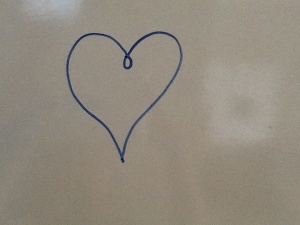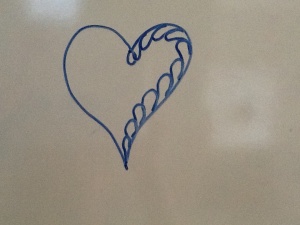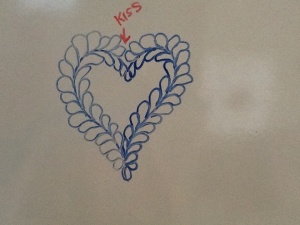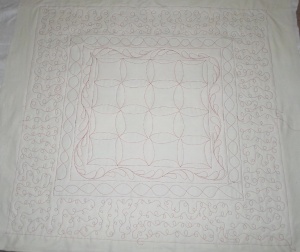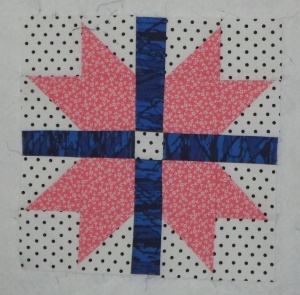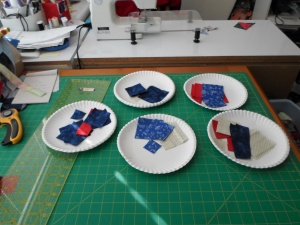Free Motion Quilting
My best customer is keeping me in business 😉 Thanks Mom! She is a certified Angle Play (TM) instructor, and this is a class sample.
 (not wrinkled in real life, just laid on a chair for a quick photo)
(not wrinkled in real life, just laid on a chair for a quick photo)
I matched the thread to the rows and did a free motion swirl design across the blue sections and a fern feather across the yellow parts. Here is the back detail.
I think of the blue section as Landscape fill, since it can look like elevation lines on a contour map. Here is a sketch of how it is quilted. You can also search through Leah Day’s tutorials for a similar design.
First break your space into smaller sections, then go back and echo the line. I use alot of gentle S curves. You can add a swirl here and there for more interest. I also add a touch of McTavishing, which is a slightly different effect where one end of the curve always hits the same point. This is a good filler design for borders.
You can add a swirl here and there for more interest. I also add a touch of McTavishing, which is a slightly different effect where one end of the curve always hits the same point. This is a good filler design for borders.
I want to mention that if you ever see a quilt you are interested in purchasing, please contact me. I am open to selling my work and I do quilt on commission. I can teach workshops too!







